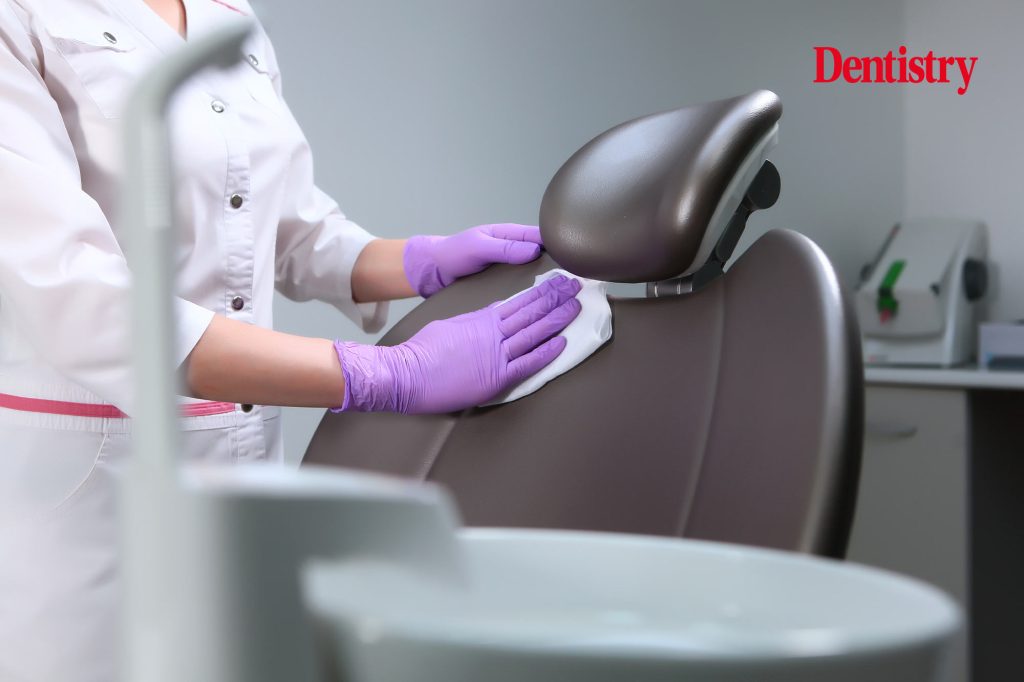
Ron Brown provides dental infection prevention guidelines to implement a clean and sterile environment for patients and staff.
On average, dentists see anywhere from 10 to 15 patients each day. These patients expect high-quality care, starting with a clean and contamination-free environment, even with little to no time between appointments. In the dental and healthcare industry, a clean and tidy medical facility can stand between patients and their willingness to receive necessary treatments
From the office administrator to dental hygienists and even dentists themselves, every staff member should play a role in upholding industry sanitisation standards to help ensure these expectations are met. However, as stated by the Department of Health in the Health Technical Memorandum 01-05 guidelines, dental practices should have a nominated lead member of staff responsible for infection control and decontamination.
When cleaning and disinfecting surfaces and patient-care areas, three circumstances should be considered:
- The potential for direct patient contact
- The degree and frequency of hand contact
- The potential contamination of the surface or area with bodily substances or environmental sources of microorganisms (eg soil, dust, or water).
After considering these factors, here are several guidelines and strategies dental infection prevention coordinators can implement to establish a sterile environment for patients and staff.
Regularly disinfect high-touch areas and objects
Disinfection or sterilisation is the first step in cleaning a healthcare facility. To ensure high-touch surfaces are regularly maintained, infection prevention coordinators should consider creating a cleaning checklist.
Visit dentistry.co.uk/compliance for more information and to sign up.
Maintain hygienic bathrooms
Unhygienic restrooms are a primary source of infection transmissions. In a dentist’s office, the state of the restrooms available can deeply reflect the facility’s dedication towards cleanliness and patient care. Keeping restrooms fully stocked with toilet paper and other essentials can help to showcase that hygiene is a priority among both staff and patients.
Adding surfaces such as toilet seats, sink tops, door handles, and faucets to the office’s sterilisation checklist is important in preventing the spread of potential infectious diseases and other common contaminants.
Facilities with high foot traffic should also consider involving third-party vendors and invest in stronger more effective cleaning methods. A study conducted in 2021 reported that UV-C technology, fogging, and electrostatic sprayers are proven to be effective in mitigating infectious diseases in healthcare facilities including dental practices.
Administer patient health screening
Following the pandemic, most medical facilities implemented patient screening to help eliminate health risks before a patient ever enters the facility. This strategy is arguably the easiest to implement and can be as simple as an online questionnaire prompted during sign-in.
Patient screening is becoming a common practice in every sector of the healthcare space. If a patient with the flu, COVID-19, or any other transmissible infection sits in a waiting room with several other patients, that individual is likely to infect others. Policies that can help prevent sick staff or patients from contaminating healthcare facilities are critical in maintaining sterile environments.
Align disinfection procedures with industry standards
Industry-specific standards assist in providing structural guidelines for medical facilities to follow when it comes to patient care and safety. These standards also provide helpful educational resources that can elevate staff’s overall understanding of the importance of infection control and prevention in the workplace.
It’s important to note that these guidelines often specify certain immunisations required by dental personnel, including diseases that can be commonly transferred in practice such as hepatitis B.
These protocols and practices are vital in establishing an environment where patients and staff feel safe and their health is made an utmost priority. While numerous factors cannot be controlled when it comes to infection prevention, including external environments and exposures, these key strategies can help to mitigate their impact by creating a sterile environment.
It is the responsibility of dental care professionals and all medical professionals to assist in eliminating potential health threats for their staff and patients. With the proper tools and resources, dental practices uphold and surpass industry sanitisation standards.
Follow Dentistry.co.uk on Instagram to keep up with all the latest dental news and trends.


